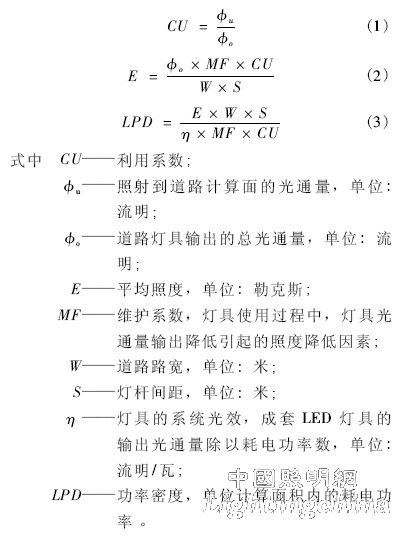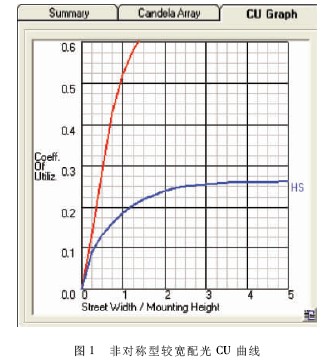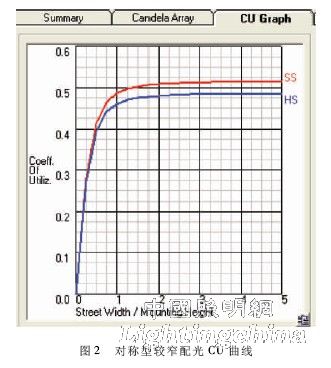In today's era of scarce resources, low-carbon economy, energy-saving emission reduction, green lighting and other related topics are not uncommon, and the state-advanced LED solid-state lighting technology has developed rapidly. LED chip maker Cree announced in March 2010 that its chip efficacy reached 208 lm / W (laboratory data), and its mature flagship product has exceeded 130 lm / W. It can be foreseen that the LED light source will soon reach and exceed the light efficiency of the traditional light source, and its energy-saving benefits gradually emerge. However, in the development process of road lighting fixtures, there are still many technical difficulties, such as power loss, heat dissipation technology, secondary optical design, etc., which makes the overall light efficiency of the lamps greatly reduced, and the efficiency of the lighting system is less than 75lm /W. So far, LED road lighting is still in the demonstration stage of government-led demonstration. The entire LED road lighting industry lacks practical application experience. There is a certain gap between lighting development and lighting applications, for example, secondary lighting design and application of lamps. The gap in demand causes the output luminous flux of the LED road luminaire to be projected onto the road surface, and there is a problem that the brightness is insufficient or the utilization factor is too low, which results in an energy saving effect of the LED road lighting. This paper will discuss how to improve the energy-saving effect of LED road lighting fixtures from the perspective of light distribution design. It is necessary to evaluate the light distribution performance of road lighting fixtures by using the coefficient CU and the illumination brightness ratio E / L in addition to the illumination brightness uniformity index. Good or bad, and summed up the problems in the design of road lighting.
2 Two important indicators for evaluating the performance of road lighting design
In the LED lighting industry, energy conservation is one of the main highlights of speculation, but from the experience of actual engineering cases, its energy-saving effect is far less impressive than the manufacturers claim, if without sacrificing lighting levels and effects, Not even as efficient as traditional high pressure sodium lamps. There are many reasons for this. For example, the problem of heat dissipation technology causes the phosphor to age after being heated, and its conversion light efficiency is reduced. When power supply is lost, many manufacturers do not consider the system light effect caused by power loss when evaluating the LED energy saving effect; The problem of sub-light distribution, the illuminating of many lamps is unreasonable, resulting in a lot of light flowing out of the road surface, and some of the light is irradiated to the area away from the road, which not only wastes energy, but also causes adverse effects such as light pollution and light intrusion. There is a lack of technical indicators in the industry to evaluate the performance of light distribution, and optical engineers in the industry do not understand the application requirements of road lighting. When they are doing LED lighting design, the main goal is to meet the CJJ45-2006 urban road lighting design. The technical parameters specified in the standard for uniformity and glare are not enough for what kind of light distribution is more suitable for road lighting. The CJJ45—2006 standard is mainly a specification for road lighting design, and has limited constraints on the design of road lighting design. Moreover, the standard is mainly based on traditional light sources, and the binding force is very low for the LED road lighting. What kind of light distribution is more suitable for road lighting? In short, it is to use less light to achieve the technical parameters specified in the road lighting specifications, and to improve the uniformity and reduce the glare value as much as possible. However, in the design of the light distribution, the lack of technical indicators to evaluate the quality of the light distribution, resulting in a mixed situation in the industry. A good light distribution design, first of all to meet the illumination uniformity, has reached a consensus in the industry, the general optical software can achieve illumination uniformity simulation. Since there is no optical software loading road surface brightness coefficient library, optical designers can not simulate the uniformity of road surface brightness of different materials, so most of the light distribution design in the industry can not meet the brightness uniformity UL or overall uniformity UO, even the industry There is still not enough knowledge of brightness uniformity. In addition to satisfying the illuminance and brightness uniformity, it is also necessary to consider whether the utilization factor is high, whether the ratio of illuminance to brightness is low enough, and whether there is an energy saving effect. After studying and comparing the light distribution curves of different manufacturers, the author proposes to use the utilization coefficient CU and the illumination brightness ratio E / L to evaluate the light distribution performance, which is enough to highlight the advantages and disadvantages of its optical performance.
2. 1 Coefficient of Utilization
The utilization factor refers to the percentage of the luminous flux received by the road calculation surface as a percentage of the total luminous flux output by the luminaire. It can be calculated by the formula (1). The relationship between the coefficient CU and the average illuminance E and the power density LPD is obtained by the formulas (2) and (3). It can be seen from equation (3) that the power density LPD is inversely proportional to the utilization factor CU, that is: the utilization factor CU can be used to directly reduce the power density LPD value to achieve the effect of energy saving. Only the light distribution design with high coefficient can ensure the road surface has Sufficient illumination and brightness. In the traditional road lighting industry, the denominator part of formula (1) has been defined as the luminous flux of the light source. Since the luminous flux of the LED light source is more complicated by the influence of the luminaire, the luminous flux of the traditional light source is difficult to define. This paper recommends using the luminous flux of the luminaire to define Use coefficients to facilitate calculations and promotion of this technical indicator.

In general, the lower the height of the pole and the wider the road, the higher the utilization factor. Figures 1 and 2 show the relationship between the utilization factor CU and the aspect ratio (W / H). If the lateral light distribution design of the luminaire is too wide (as shown in Figure 1), when applying to a narrower road (such as 2 to 3 lanes), the utilization factor is too low, causing serious energy waste; The lateral light distribution design is too narrow (as shown in Figure 2), and when applied to wider roads, there is a problem of reduced uniformity.

